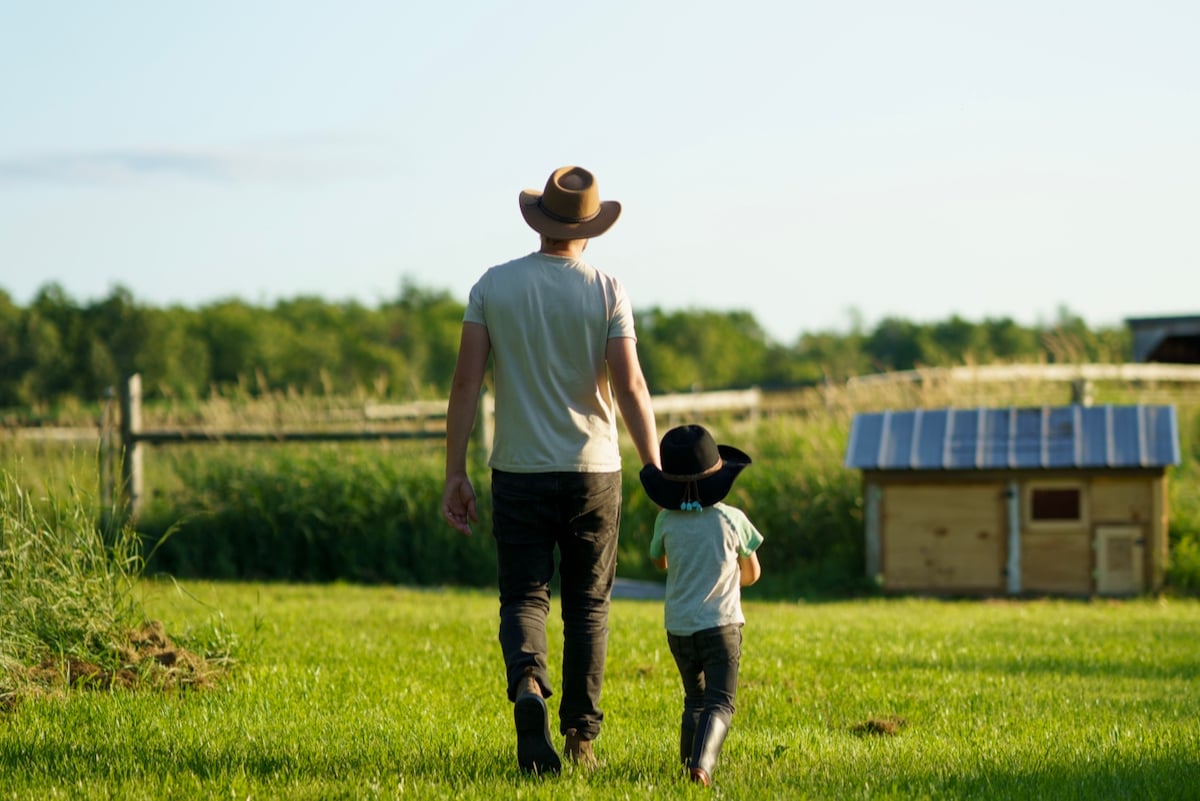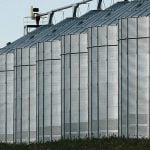There are some things you never forget. “It was the day before we were planning to go out and start seeding,” recounts Dave Kroeker from his farm at Killarney, just north of the U. S. border in south-central Manitoba. “It was April 26, 2006.”
Like any spring, Dave had been doing some last-minute work in his shop. This time, though, a spark must have landed someplace where it could smolder. Sometime in the late morning, when no one was around, the smoke turned to flame. “We lost it all,” Dave says. “It burnt to the ground. In one day we lost tools, a grain truck, and a ’72 Chevelle that we were fixing up that belonged to my 14-year-old son.”
Dave and Adrienne Kroeker farm 3,800 acres with their grown sons Daniel and Scott, and their daughters Kari and Robyn, whose husbands both pitch in at harvest time. The centre for all that farming was their original workshop, an old 20-by 40-foot army barracks that had come from Canadian Forces Base Shilo, with windows running down each side.
Read Also

A new spin on farm legacy
What does farm legacy look like for the next generation.
Luckily it was insured, and after the fire, neighbours rallied to help. “The next day a couple of friends dropped off a bunch of tools to help us get started,” says Dave. “During Dur-
the summer, we talked about replacing the shop, and we thought of tearing down our old barn and putting up a new building. But
“ I Always Dreamed Of Having A Heated Shop — Large Enough Area To Pull Any Of Your Machinery In To Work On In The Summer; To Have A Smooth, Clean Floor And The Space To Work On, And To Be Able To Work On Hobbies.”
— Dave Kroeker
Adrienne said, ‘We are not going to tear down the barn.’”
The farm’s old barn was a hip roof structure, erected in 1943 by then-owner Charlie Baskerville. Dave and Adrienne took over the farm in 1986, though even in his late 80s Charlie came out regularly during harvest to “give us words of wisdom,” Dave recalls.
The old barn was situated near to the house, and would make a perfect location for a workshop. “I love farmyards with a barn,” says Adrienne. “I thought it would be a shame to take it down.”
At a cost of around $60,000, the family pulled their resources together to eventually transform it into a state-of-the-art workshop, and the envy of many farmers in the district.
“A new build would have been around $100,000,” says Dave, who then adds, “A new shop would also have been a little wider.”
A fiancé of his daughter’s needed a job that summer, and Dave gave him the go ahead to start work on the renovation project. “Basically, we had to gut the whole thing. We left the original frame, and we put in 2×6 braces to keep it from sagging,” Dave says.
The work included taking out all the interior walls to provide the largest possible work area. The Kroekers also took out the loft and put in ceiling rafters at a 20-foot height. They insulated the walls with fibreglass, put in a vapour barrier, then framed the inside with plywood and sheet metal.
The plan also involved mounting a 16-foot overhead, insulated, commercial electric garage door, with a remote. Plus they poured a new concrete floor, complete with in-floor heating.
By the end of October, 2006, the shop job was completed. It also happened to be the 25th year since the couple had married, so the rest of the family decided to hitch the two events into one big celebration in true Kroeker style.
“The kids threw us a party in it, while it was still clean,” says Dave. “We had about 70 people in the shop. It was more of an anniversary party, but it was also a christening of the shop. There was no grease in there yet.”
The best shop asset is the heated, smooth cement floor, saiys Dave. A close second is the more than 20-foot long metal workbench that runs along most of the south wall. Made of 3/16-inch mild steel, it bends up to form a four-inch backsplash, and rolls forward to give a rounded front finish.
Dave’s third pick is his homemade hydraulic press, which harnesses 50 tons of pressure to hold, bend and straighten metal, and push out bearings.
“It was custom-built by one of our hired men,” says Dave. “It cost us about $800. A new one can cost $5,000 to $6,000.”
Unlimited wrenches, tools, a drill press, and hundreds of other farm items are carefully lined up along the bench’s yards of space. A second wood bench begins near the east end of the shop, just after the press, which son-in-law Travis Tannas put in especially for woodworking projects.
“I made it so you could drive a truck on it,” said Tannas, who loves to work with wood. He used a solid row of 2×4’s, placed on their sides, and laminated together, to set up the bench, and then covered it in plywood. It makes a very solid, firm base, quite similar to a butcher’s block.
High above the tops of the two benches, and all around the huge shop, runs a compressed air line, with multiple valves springing from it. Seven hang from one wall alone.
“You can’t farm without compressed air,” says Dave. “We can run all our air tools from it: a sander, an impact drill, wrenches, Dremel tools. And you can blow stuff off.”
The shop, which measures around 35 feet by 80 feet, gives the Kroekers a good 2,800 square feet of space to play in. This floor space can easily hold six or seven regular vehicles, such as cars. The back of the shop is set aside just for this, and a cool GTO is parked there at present, an empty hole yawning where the engine once sat, and where it will one day soon be returned, ready to be fired up.
A second, smaller overhead door runs off to the north here, making it easy to move snowmobiles, cars and other items in and out without having to clear everything in the shop out of the way if it’s busy and loaded. They always keep a bi-directional loader tractor parked inside in winter, where it’s ready to go but takes up only a small portion of the expansive floor.
Heating the shop doesn’t come cheap, but it’s worth every penny to the family. Laid into the floor, before the cement was poured, electric heat cables run on the power of their own electric heater, installed specifically for that job.
“We will pay $300 to $500 per month in the winter months to heat it,” says Dave. “It’s a relatively small price to pay for a place to go in the winter to work.”
If you look out through that northern door, you can see a row of seven new, and very shiny, 20,000-bushel grain bins. The Kroekers used to have their bins on the south side of the farm, in a low, rather wet area, until Mother Nature decided to shift things around a bit for them. It was a year after the shop fire, and this time it was going to mix things up big time. It was a Saturday night, June 23, and it was about to get very lively.
“It wasn’t that windy,” says Dave. “It was about 10 p. m. at night, and there was no big noise. But when the wind did finally come, you couldn’t hear someone 10 feet away. It was already dark, and it took out so many of our trees — we lost three-quarters of the shelterbelt. These were 50-and 60-foot evergreens.”
Travis Tannas was outside with Dave at the time, watching the sky
“The clouds were going around in circles, and they were green and purple,” Tannas says. “And then the wind changed direction instantly, and I said, ‘We should go inside.’ I saw bins rolling away. It was pretty amazing, and 30 or 40 seconds later I saw Scott stumbling towards the house, as white as a sheet of paper.”
Scott Kroeker had been sent out to the workshop a few minutes earlier by his dad to fetch a ladder. One of the eavestroughs on the house was plugged, and Dave wanted his son to get up there and pull out the leaves. But the noise was building up inside the shop, rattling the roof like crazy, and Scott decided to forget the ladder and leg it back to the safety of the family home, a couple of hundred feet away.
“The wind got really loud, and I ran for the house,” Scott remembers. “I saw a piece of plywood flying around, around 40 or 50 feet in the air. I was running
“You can’t farm without compressed air,” says Dave. “We can run all our air tools from it: a sander, an impact drill, wrenches, Dremel tools. And you can blow stuff off.”
The shop, which measures around 35 feet by 80 feet, gives the Kroekers a good 2,800 square feet of space to play in. This floor space can easily hold six or seven regular vehicles, such as cars. The back of the shop is set aside just for this, and a cool GTO is parked there at present, an empty hole yawning where the engine once sat, and where it will one day soon be returned, ready to be fired up.
A second, smaller overhead door runs off to the north here, making it easy to move snowmobiles, cars and other items in and out without having to clear everything in the shop out of the way if it’s busy and loaded. They always keep a bi-directional loader tractor parked inside in winter, where it’s ready to go but takes up only a small portion of the expansive floor.
Heating the shop doesn’t come cheap, but it’s worth every penny to the family. Laid into the floor, before the cement was poured, electric heat cables run on the power of their own electric heater, installed specifically for that job.
“We will pay $300 to $500 per month in the winter months to heat it,” says Dave. “It’s a relatively small price to pay for a place to go in the winter to work.”
If you look out through that northern door, you can see a row of seven new, and very shiny, 20,000-bushel grain bins. The Kroekers used to have their bins on the south side of the farm, in a low, rather wet area, until Mother Nature decided to shift things around a bit for them. It was a year after the shop fire, and this time it was going to mix things up big time. It was a Saturday night, June 23, and it was about to get very lively.
“It wasn’t that windy,” says Dave. “It was about 10 p. m. at night, and there was no big noise. But when the wind did finally come, you couldn’t hear someone 10 feet away. It was already dark, and it took out so many of our trees — we lost three-quarters of the shelterbelt. These were 50-and 60-foot evergreens.”
Travis Tannas was outside with Dave at the time, watching the sky
“The clouds were going around in circles, and they were green and purple,” Tannas says. “And then the wind changed direction instantly, and I said, ‘We should go inside.’ I saw bins rolling away. It was pretty amazing, and 30 or 40 seconds later I saw Scott stumbling towards the house, as white as a sheet of paper.”
Scott Kroeker had been sent out to the workshop a few minutes earlier by his dad to fetch a ladder. One of the eavestroughs on the house was plugged, and Dave wanted his son to get up there and pull out the leaves. But the noise was building up inside the shop, rattling the roof like crazy, and Scott decided to forget the ladder and leg it back to the safety of the family home, a couple of hundred feet away.
“The wind got really loud, and I ran for the house,” Scott remembers. “I saw a piece of plywood flying around, around 40 or 50 feet in the air. I was running
Kroeker Farms
The Kroekers grow mainly wheat and canola, and sometimes oats, in rotation on their 3,800 acres just north of Killarney. They also run three feeder barns, with 2,100 pigs in each, that start off with a nursery weight of around 50 pounds, and are grown on to finish weights. Their hog operation has been run on a contract basis, which has helped keep them in the black during these troubled economic times for the pork sector.
“We have a Maple Leaf contract,” says Dave Kroeker. “We are in our seventh year now with them. If you have a good contract you don’t get the highs when the price is good, but you won’t lose money either. I’m happy we made the contract, and I think Maple Leaf is pretty stable.”
The family made the decision to expand into pork production a number of years ago as part of a “diversification” plan for the farm, and it helps keep down input costs for their grain and oilseeds. They supply the labour and housing and housing for the pigs, while Maple Leaf supplies all feed and medications.
“The pigs complement the grain farm, because of the fertilizer we get from the barns,” says Kroeker. “The pigs were our diversification strategy.”
across the lawn, and the wind came behind me and lifted me up. My feet were suddenly going faster than I was, and then I was on my back. I was barefoot — I had been swimming earlier. I got up and ran in the house.”
“Nobody saw for sure what happened,” said his father. “Scott was running really fast, and the tornado kind of picked him up.”
The tornado, whose strength and velocity was estimated to be somewhere between an F-3 and F-4, picked up a lot of other things besides a fully grown young man.
“The bins were cemented into the ground, and the cement came out in chunks during the tornado,” says Dave. “It took out the trees around the house, but left the house standing. Just 30 feet away there was a semi loaded with light cardboard boxes, and they weren’t touched. The machinery was all scrambled around. We had $100,000 worth of machinery damage. The bins were worth $30,000 to $40,000, but everything was insured.”
The tornado gave him a chance to improve his set-up, and he took opportunity with both hands. He’d been talking about moving the bins for years, and he had always wanted a better shop, he said.
“The old bins weren’t in the best location, and now they are in a better position,” he said. “The tornado was the catalyst to build new bins, and the fire was a catalyst to have a new shop. The two events just helped me make my decisions more quickly.”
Then Dave smiles and adds, “The family has told me I’m not allowed to say what I want anymore, because every time I do, something like this seems to happen.”














